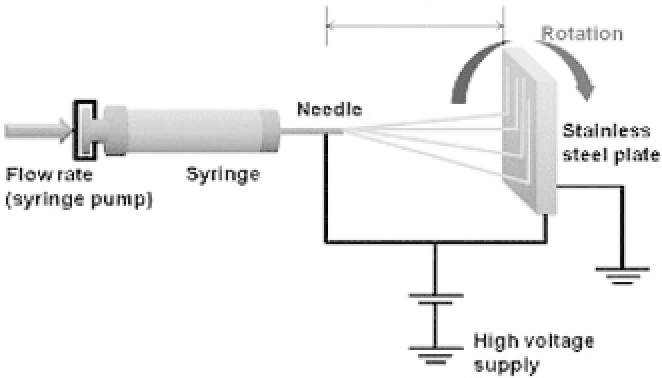Biomedical Engineering Reference
In-Depth Information
10.2 Electrospinning Technology
Electrospinning has been widely used as a fabrication method to
generatenanofibersforvarioustissueengineeringapplications.The
nano-scaled fiber structures generated by this method are designed
to support cell adhesion and guide cellular behavior. This technol-
ogy offers the ability to control scaffold composition, structure, and
mechanical properties.
Electrospinning requires a high-voltage power supply, a syringe
pump,apolymersolutiontobespun,andagroundedcollectionsur-
face. Solutions containing various materials are exposed to a high-
voltage power supply at 5-25 kV potential between the solution tip
andthegroundedsurface(Fig.10.1).Thesolutionisdeliveredwitha
syringethroughablunt-tipneedleataflowrateof3-10mL/hrusing
a syringe pump. Fibers can be collected onto a specially designed
groundedmandrelatadistanceof5-30cmfromtheneedletip.Con-
trolling certain variables during electrospinning allows for control-
ling morphology,diameter, and alignmentof fibers
6
(Table 10.1).
The fabricated electrospun nanofibers possess unique features
and properties, including an extremely high surface-area-to-volume
ratio,whichallowsforenhancedcellularinteractionswithscaffolds.
Distance
Needle
Stainless
steel plate
Syringe
Flow rate
(syringe pump)
High voltage
supply
Figure 10.1.
Electrospinning methodology. Fibers are collected on a
grounded surface. The electrostatic field causes splaying of solution, and
solutions of su
cient viscosity and surface tension form fibrous mats that
adhere to the grounded surface.











Search WWH ::

Custom Search